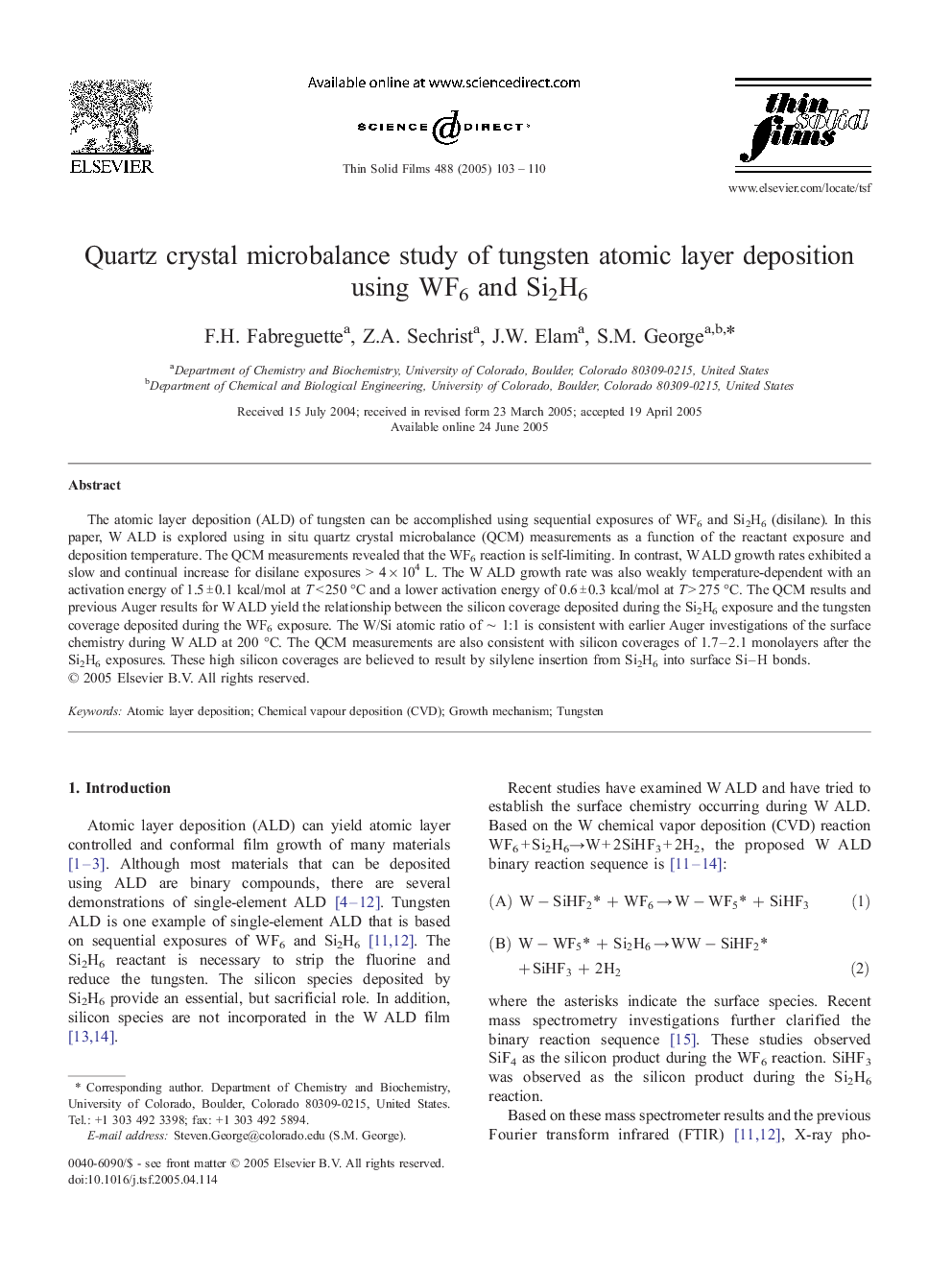| Article ID | Journal | Published Year | Pages | File Type |
|---|---|---|---|---|
| 9812314 | Thin Solid Films | 2005 | 8 Pages |
Abstract
The atomic layer deposition (ALD) of tungsten can be accomplished using sequential exposures of WF6 and Si2H6 (disilane). In this paper, W ALD is explored using in situ quartz crystal microbalance (QCM) measurements as a function of the reactant exposure and deposition temperature. The QCM measurements revealed that the WF6 reaction is self-limiting. In contrast, W ALD growth rates exhibited a slow and continual increase for disilane exposures > 4 Ã 104 L. The W ALD growth rate was also weakly temperature-dependent with an activation energy of 1.5 ± 0.1 kcal/mol at T < 250 °C and a lower activation energy of 0.6 ± 0.3 kcal/mol at T > 275 °C. The QCM results and previous Auger results for W ALD yield the relationship between the silicon coverage deposited during the Si2H6 exposure and the tungsten coverage deposited during the WF6 exposure. The W/Si atomic ratio of â¼Â 1:1 is consistent with earlier Auger investigations of the surface chemistry during W ALD at 200 °C. The QCM measurements are also consistent with silicon coverages of 1.7-2.1 monolayers after the Si2H6 exposures. These high silicon coverages are believed to result by silylene insertion from Si2H6 into surface Si-H bonds.
Related Topics
Physical Sciences and Engineering
Materials Science
Nanotechnology
Authors
F.H. Fabreguette, Z.A. Sechrist, J.W. Elam, S.M. George,
